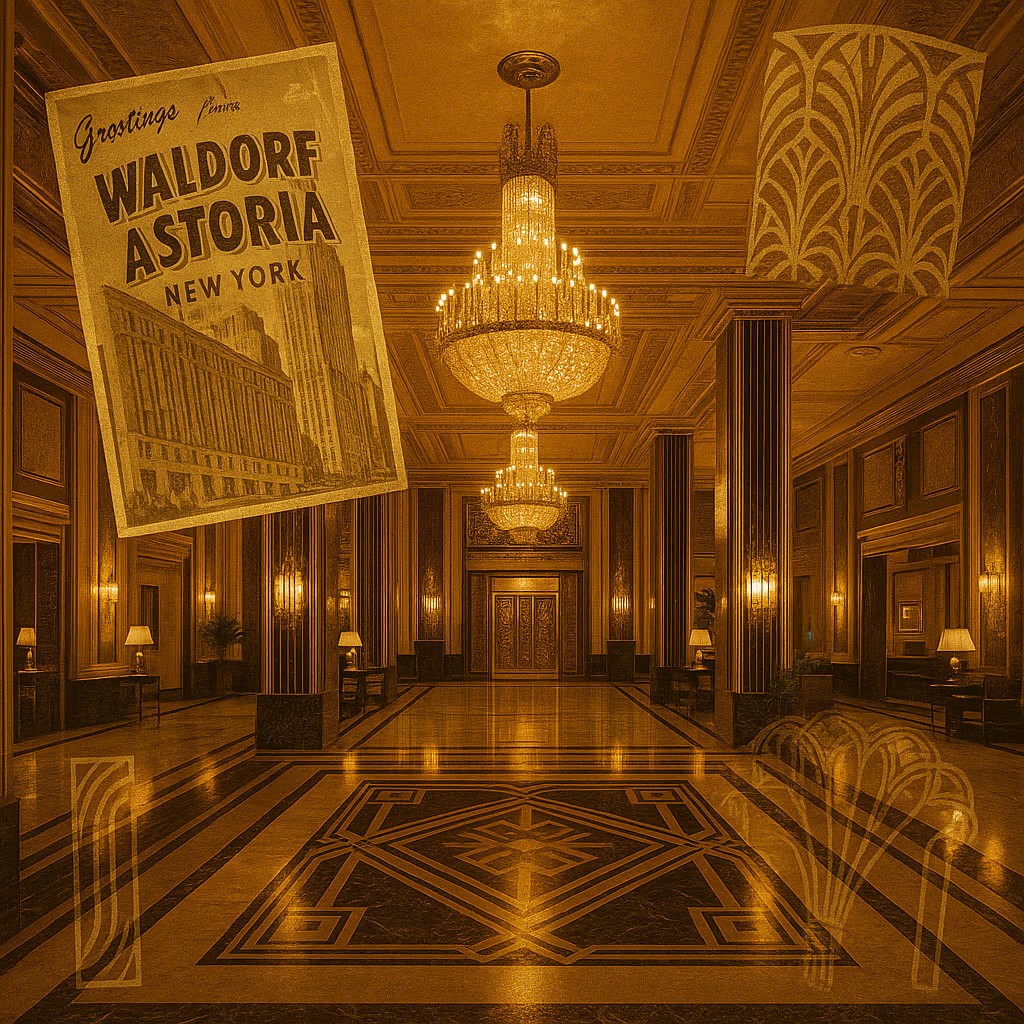The Waldorf Astoria has always been more than just a hotel—it’s an American icon. For decades, the legendary property stood as the pinnacle of glamour in New York City, hosting presidents, celebrities, and world leaders. After years of anticipation and an extensive restoration, the Waldorf Astoria has reopened its doors, and stepping inside feels like traveling back in time to the opulence of the Gilded Age.
The Legacy of the Waldorf Astoria
Few hotels in the world carry as much history as the Waldorf Astoria. Since its debut on Park Avenue in 1931, the hotel has been synonymous with luxury and prestige. It became famous not only for its grand ballrooms and lavish décor but also for its unparalleled guest list. Every U.S. president from Herbert Hoover to Barack Obama stayed at the Waldorf, along with icons such as Marilyn Monroe, Frank Sinatra, and Queen Elizabeth II.
But in 2017, the Waldorf closed its doors for what became one of the most ambitious restoration projects in hospitality history. After six years and hundreds of millions of dollars in renovations, the hotel has returned—restored to its former grandeur while updated with modern luxury for today’s traveler.
A Walk Into the Gilded Age
The moment you enter the lobby, you’re struck by the artistry and elegance that made the Waldorf famous. The marble floors, soaring ceilings, and sparkling chandeliers create an immediate sense of timeless grandeur. Many of the historic features have been carefully preserved, including the famous “Spirit of Achievement” statue and the iconic Peacock Alley.
The design team, made up of world-renowned architects and preservationists, leaned into the hotel’s Gilded Age roots. Gold accents, Art Deco touches, and intricate detailing can be found throughout the property. The restoration was not about modernization but about honoring the hotel’s history and bringing it back to life with stunning precision.
Guest Rooms: Classic Meets Contemporary
While the public spaces evoke Old World charm, the guest rooms have been reimagined to combine classic elegance with modern convenience. The rooms feature high ceilings, custom furnishings, and hand-crafted finishes. Expansive windows frame views of the Manhattan skyline, while luxurious bathrooms offer marble vanities, soaking tubs, and the latest in smart technology.
The hotel’s suites, once the residences of royalty and dignitaries, have been restored to their original splendor. The Presidential Suite, in particular, is a masterpiece, offering a private dining room, library, and expansive living quarters fit for heads of state.
Dining and Entertainment Revived
The Waldorf Astoria’s dining venues have always been legendary, and the restoration brings them back with renewed vigor. Peacock Alley once again serves as the social hub of the hotel, offering afternoon tea, cocktails, and light bites under glittering chandeliers.
The Bull & Bear Steakhouse, long a staple of New York fine dining, has been reimagined with a contemporary twist while still paying homage to its storied past. Guests can also enjoy a range of new dining concepts, from casual lounges to refined restaurants led by Michelin-starred chefs.
The Restoration Effort
The scale of the project was staggering. Preservationists worked tirelessly to restore original features, from hand-painted murals to brass fixtures, while artisans crafted replicas of elements that had deteriorated over time. The effort went far beyond aesthetics; the restoration also included modern upgrades to infrastructure, ensuring the Waldorf can operate at the highest standards for decades to come.
The project reflects New York City’s broader commitment to preserving its cultural landmarks. For many, the reopening of the Waldorf is not just about a hotel but about honoring the city’s heritage and identity.
Why It Matters to New York City
The Waldorf Astoria’s reopening represents more than just another luxury hotel entering the market. It’s a symbol of resilience, glamour, and the enduring spirit of New York. After years of challenges—from economic downturns to global uncertainty—the return of such an iconic landmark feels like a renewal for the city itself.
Tourism officials see the Waldorf’s reopening as a boon for New York, likely drawing international visitors who want to experience a piece of history. Meanwhile, locals who have long associated the hotel with weddings, galas, and legendary brunches can once again gather in its grand halls.
Walking through the Waldorf Astoria today feels both nostalgic and refreshing. It’s as if the past and present coexist within its walls, offering guests the best of both worlds: the grandeur of the Gilded Age and the comforts of modern luxury.
For anyone visiting New York, a stop at the Waldorf Astoria is more than a hotel stay—it’s a chance to experience living history. Whether sipping champagne in Peacock Alley, staying in a suite once occupied by presidents, or simply marveling at the artistry of its architecture, the Waldorf Astoria proves once again why it has remained one of the most iconic hotels in the world.





